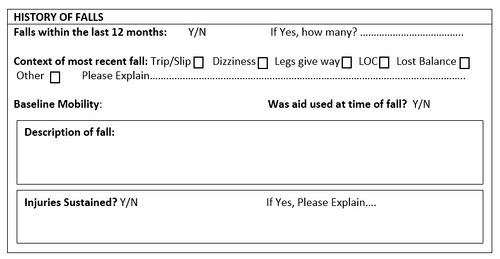Little Known Questions About Dementia Fall Risk.
Get This Report on Dementia Fall Risk
Table of ContentsThe 7-Minute Rule for Dementia Fall Risk6 Easy Facts About Dementia Fall Risk ShownUnknown Facts About Dementia Fall RiskSee This Report about Dementia Fall Risk
A fall risk analysis checks to see how likely it is that you will certainly drop. The evaluation normally consists of: This consists of a collection of inquiries regarding your total health and wellness and if you've had previous falls or issues with balance, standing, and/or strolling.Interventions are suggestions that might lower your danger of falling. STEADI consists of 3 steps: you for your threat of dropping for your risk factors that can be improved to try to protect against drops (for example, equilibrium problems, impaired vision) to reduce your risk of dropping by making use of reliable methods (for instance, supplying education and resources), you may be asked several questions including: Have you dropped in the previous year? Are you worried regarding dropping?
If it takes you 12 secs or more, it might indicate you are at greater risk for a fall. This examination checks strength and balance.
The settings will get more difficult as you go. Stand with your feet side-by-side. Relocate one foot halfway ahead, so the instep is touching the large toe of your other foot. Move one foot completely before the various other, so the toes are touching the heel of your various other foot.
Not known Details About Dementia Fall Risk
Most drops take place as a result of numerous contributing factors; therefore, managing the danger of dropping starts with determining the elements that add to drop risk - Dementia Fall Risk. A few of one of the most relevant threat elements consist of: Background of prior fallsChronic clinical conditionsAcute illnessImpaired gait and balance, reduced extremity weaknessCognitive impairmentChanges in visionCertain risky drugs and polypharmacyEnvironmental elements can also boost the danger for drops, consisting of: Insufficient lightingUneven or damaged flooringWet or unsafe floorsMissing or damaged hand rails and order barsDamaged or incorrectly fitted equipment, such as beds, wheelchairs, or walkersImproper usage of assistive devicesInadequate guidance of individuals staying in the NF, including those who show hostile behaviorsA successful fall threat management program calls for an extensive scientific analysis, with input from all members of the interdisciplinary group

The treatment plan should also include interventions that are system-based, such as those that advertise a safe setting (appropriate lighting, hand rails, grab bars, etc). The performance of the interventions should be reviewed occasionally, and the care plan modified as needed to mirror modifications in the fall danger assessment. Executing a loss risk management system utilizing evidence-based best method can decrease the occurrence of falls in the NF, while limiting the possibility for fall-related injuries.
The Basic Principles Of Dementia Fall Risk
The AGS/BGS standard suggests evaluating all grownups aged 65 years and older for loss threat every year. This testing is composed of asking individuals whether they have dropped 2 or even more times in the past year or sought clinical attention for a fall, or, if they have not fallen, whether they feel unstable when strolling.
People who have dropped when without injury should have their balance and gait examined; those with stride or equilibrium abnormalities read should obtain added evaluation. A background of 1 loss without injury and without stride or balance problems does not warrant additional assessment past continued annual autumn risk testing. Dementia Fall Risk. A loss threat analysis is needed as part of the Welcome to Medicare assessment

About Dementia Fall Risk
Documenting a drops background is just one of the quality indications for loss prevention and monitoring. A crucial component look what i found of risk analysis is a medicine evaluation. A number of courses of drugs raise autumn risk (Table 2). copyright medications in particular are independent predictors of falls. These medications tend to be sedating, alter the sensorium, and harm balance and gait.
Postural hypotension can usually be reduced by minimizing top article the dosage of blood pressurelowering medicines and/or quiting medications that have orthostatic hypotension as a negative effects. Usage of above-the-knee assistance hose pipe and sleeping with the head of the bed elevated may likewise decrease postural decreases in high blood pressure. The suggested components of a fall-focused health examination are shown in Box 1.

A TUG time higher than or equal to 12 secs recommends high fall danger. Being not able to stand up from a chair of knee elevation without utilizing one's arms indicates increased autumn threat.